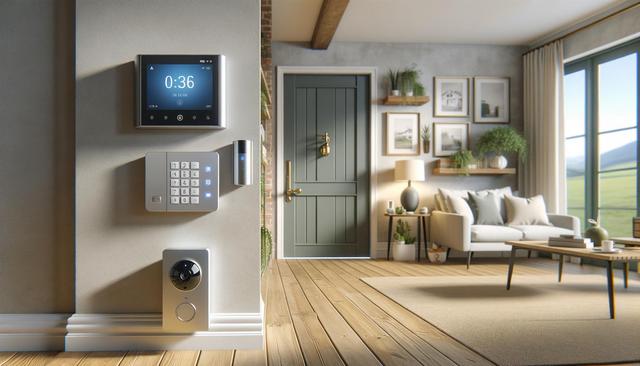
A Practical Guide to Modern Home Security Systems
Understanding the Basics of Home Security Systems
Home security systems are designed to protect a property from unauthorized access, theft, and other potential threats. At their core, these systems typically include a combination of sensors, cameras, alarms, and control panels. The main purpose is to detect unusual activity and alert homeowners or emergency services in real-time. Systems may be hardwired or wireless, with wireless options offering more flexibility in installation and scalability. Some key components often found in a standard home security setup include:
- Door and window sensors
- Motion detectors
- Security cameras (indoor and outdoor)
- Glass break sensors
- Control panels with keypads or touchscreens
These devices work together to create multiple layers of security, making it more difficult for intruders to access your home undetected. Many systems also offer mobile connectivity, allowing users to monitor and control their security features remotely using a smartphone or tablet.
Benefits of Installing a Home Security System
Installing a home security system offers several advantages beyond just deterring crime. One of the most significant benefits is the added peace of mind, knowing that your home is being monitored 24/7. Additionally, many systems can be integrated with smart home devices, creating a seamless experience for users who value convenience and automation. Here are some other notable benefits:
- Immediate alerts in case of break-ins or emergencies
- Potential reduction in homeowner’s insurance premiums
- Remote access to control lights, locks, and thermostats
- Monitoring of environmental factors like smoke or carbon monoxide
For families with children or elderly members, certain systems also allow for emergency buttons or wearable devices that can be triggered when assistance is required. This added layer of personal safety can be particularly valuable in medical emergencies or unexpected situations.
Types of Security Systems Available
The market offers a wide range of home security systems, each catering to different needs and preferences. The most common types include monitored, unmonitored, wired, and wireless systems. Monitored systems typically involve a third-party service that keeps an eye on your property around the clock and contacts authorities when necessary. Unmonitored systems, on the other hand, rely on alarms and notifications to alert homeowners directly.
Wireless systems have grown in popularity due to their ease of installation and ability to be moved or expanded as needed. They often work via Wi-Fi or cellular connections and can be managed through dedicated apps. Wired systems, while generally more reliable in terms of signal strength, require professional installation and may be harder to modify later. Choosing the right system depends on several factors, including the size of the property, budget, and specific security concerns.
Smart Home Integration and Modern Features
Today’s home security systems go beyond intrusion protection by offering a wide array of smart features. Many modern systems integrate with other smart home devices, allowing users to create routines and automations that enhance both convenience and safety. For instance, a security system can trigger lights to turn on when motion is detected outside or send a video feed directly to a mobile device.
Some of the popular smart features include:
- Voice control compatibility
- Real-time video streaming and cloud storage
- Geo-fencing capabilities for automatic arming/disarming
- Two-way audio communication through cameras
These features not only improve the usability of the system but also provide a more comprehensive approach to home management. Moreover, with software updates and cloud-based services, your system can continue to evolve and stay up-to-date with minimal effort.
What to Consider Before Choosing a System
Selecting a home security system involves evaluating your specific needs and understanding what each system offers. Start by assessing the vulnerabilities of your home—are there multiple entry points, large windows, or secluded areas? Then, consider whether you prefer a system that is professionally monitored or one you can manage independently.
Other important factors to keep in mind include:
- Installation requirements (DIY vs. professional)
- Monthly or annual subscription fees
- Availability of customer support
- Compatibility with other smart home devices
- Data privacy and cybersecurity measures
It’s also wise to read customer reviews and consult reputable sources to understand the real-world performance and reliability of different systems. Getting a system that aligns with your lifestyle and comfort level is crucial to ensuring consistent use and effectiveness.
Conclusion: Protecting What Matters Most
Home security systems have evolved into essential tools for homeowners who value safety, convenience, and control. With a wide range of options and features available, there’s a solution to match virtually any household’s needs. Whether you live in a small apartment or a large family home, investing in a reliable security system can help you feel more secure, both at home and while you’re away. Taking the time to research and choose the right system ensures that your home remains a safe and protected space for everyone who lives there.


